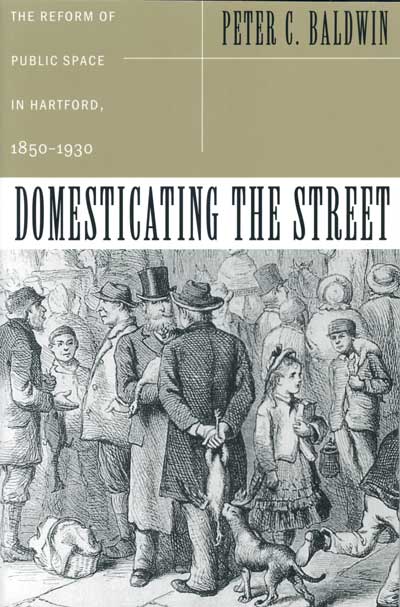Domesticating the StreetThe Reform of Public Space in Hartford, 1850–1930Peter C. BaldwinUrban Life and Urban Landscape |
 September 1999 362 pp. 6x9 |
|||
|
American city streets at the turn of the century were chaotic places where pedestrians, peddlers, vehicles, and playing children competed noisily for space. How did this scene disappear in so many urban areas, replaced by a modern streetscape dominated by traffic? Domesticating the Street locates this important change in the Progressive Era, when growing alarm about the impact of the urban environment inspired attempts to make public space conform to the values of the middle-class home. Taking the city of Hartford, Connecticut as a case study, Peter C. Baldwin examines reformers’ efforts to fight the litter, prostitution, child labor, and peddling that made streets so antithetical to Progressive ideas of decorum. Though these reformers failed, finally, to purify the streets, business-oriented individuals and groups developed a different strategy, dividing public space into a complex system of thoroughfares, pleasure drives, side streets, public markets, landscaped parks, ball fields, and playgrounds. Vice and crime weren't eliminated, but they were displaced to marginal streets and off-street alternatives. This successful reform movement culminated in the adoption of land-use zoning regulations in the 1920s. Hartford’s reform of its public space predated the flood of automobile traffic so often blamed for transforming the streets. In order to understand fully the current condition of American public spaces, Baldwin suggests, we need to look at the complex moral and commercial reform tradition that made it possible—not simply at the effects of technology. Peter C. Baldwin is an assistant professor of history at DePaul University. | ||||

